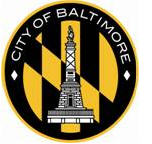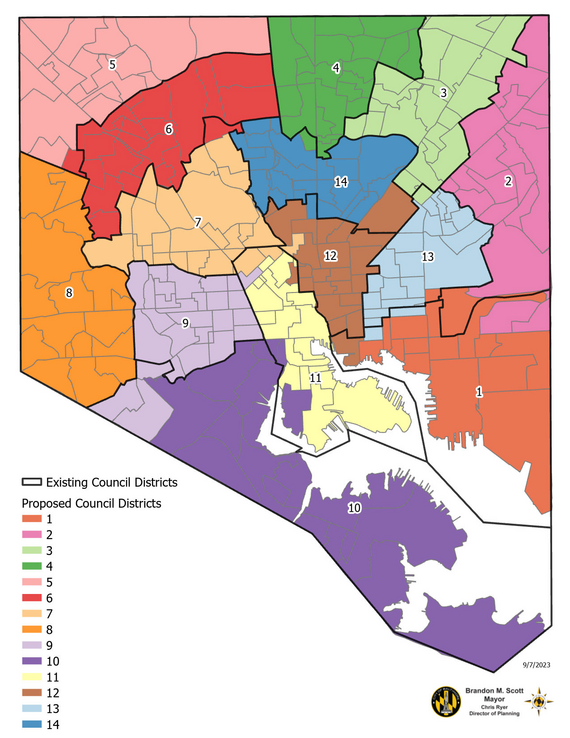Mayor Scott Introduces Redistricting Plan to City Council
Monday Sep 18th, 2023

FOR IMMEDIATE RELEASE

BALTIMORE, MD (Monday, September 18, 2023) – Today, Mayor Brandon M. Scott will introduce his redistricting plan proposal at the City Council Meeting. The City Council district map will rebalance representation for Baltimore's diverse communities. To do so, Mayor Scott’s proposal is based upon the requirements for redistricting established in the Charter of Baltimore City in light of the 2020 census data to address population changes, trends, and new imbalances within existing council districts.
“The proposed map will rebalance our City Council Districts to ensure equal representation for city residents,” said Mayor Brandon M. Scott. “Our team worked diligently for months to craft a reasonable and well-executed redistricting plan in accordance with the expectations of the law, and I commend the dedication and hard work of the Department of Law and Department of Planning that went into this effort. These changes are a reflection of our changing city, taking into account new population centers and communities experiencing growth. It is my hope that the new map serves our city well for years to come.”
The process began with the Department of Law providing guidance on the requirements of the redistricting process. This guidance included the following areas of focus.
- Population: The districts should have equality of population, as generally accepted to mean that no district should have 10% more or less population than any other district.
- Contiguous: The districts should be contiguous, meaning you can travel from any point in the district to any other point without crossing the district’s boundary.
- Compactness: The districts should be compact, although compactness does not require a district to be any particular shape or size.
The Department of Planning then provided census data that highlighted the existing disparities among council districts based on population changes since the Council map was last re-drawn, which revealed the need to rebalance the districts.
The map was drafted to take into consideration anchor institutions, and attempted to ensure at least one anchor institution was located in each council district.
The proposed map also ensures that each district's population falls within the legally required range of the target mean population of 41,836.
The proposed map intentionally tried to maintain current boundaries as much as possible, while meeting the requirements of the law. The map successfully balances the population, is contiguous and compact, and ensures that existing Council Members still live in the district that they represent.
One of the key challenges faced during this process was the significant population growth in Districts 1 and 11. To address this, population had to be carefully redistributed from these districts to others while maintaining the overall integrity of the city's councilmanic boundaries.
Other significant changes include: The precinct that includes Johns Hopkins Bayview returned from District 1 to District 2 after being removed from District 2 following the 2010 census. This change both assisted with the reduction in population needed in District 1, and added an anchor institution to District 2. Additionally, District 10, which prior to 2010 census redistricting included all of the South Baltimore peninsula, added back a portion of the peninsula to assist the reduction in population needed in District 11.
This realignment ensures that Baltimore's evolving demographics are accurately reflected in the proposed district boundaries.
Today’s release of the Mayor’s proposed map comes several months before the February 1, 2024 deadline for introduction. The Mayor deliberately released today’s map well in advance of the February 1, 2024 deadline to ensure that the final map will take effect months before the May 2024 primaries, giving candidates and the State Board of Elections time to ensure a smooth election. The Council now has 60 days to approve or amend the map prior to the map taking effect.
The Mayor encourages all residents, community leaders, and stakeholders to review the proposed map here: https://experience.arcgis.com/experience/5ef5ef6ed2804072b83981c9769d1cce/